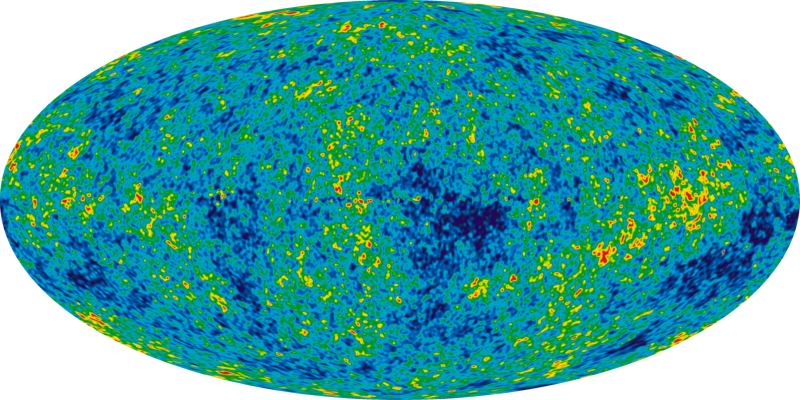This article is based on an assignment I wrote as part of an Astrophysics course I’m currently studying
It’s been nearly a century since the idea that the Universe has a beginning began to take shape. The Big Bang theory is the model that explains this beginning and indicates that it all started from a hot, dense state 13.7 billion years ago.
There are multiple lines of thinking which provide evidence for this theory, the first of which is that the Universe appears to be expanding. Hubble published a paper in 1929 detailing Hubble’s law which states that the further away a galaxy is, the faster it is receding from us¹. Hubble was able to make two key measurements from studying the galaxy; the brightness of a particular kind of star called a Cepheid variable and comparing to how bright it appeared in the sky, giving distance, and secondly the speed at which galaxies are moving thanks to the doppler effect which redshifted or blueshifted the incoming light. Both of these measurements gave the observation of Hubble’s law, supporting the idea of the Big Bang.
The formation of the elements during the first few seconds after the Big Bang suggests that conditions were just right for atomic nuclei to form, in a period of Big Bang Nucleosynthesis (BBN). This process produced around three quarters of the Universe’s material by mass in Hydrogen, with the rest made of Helium². This specific ratio of helium to hydrogen is supported by our observations of present-day galaxies, giving further strength to the Big Bang theory.
In 1965, Arno Penzias and Robert Wilson were measuring faint radio waves when they found a low, steady, mysterious noise that was evenly spread over the sky, and present day and night³. This turned out to be what is known as the cosmic microwave background (CMB). The cause of which begins around 300,000 years after the Big Bang, when the temperature of the universe dropped to a point where electrons can be captured and neutral atoms form. This created the first opportunity for light to be able to travel across a newly transparent Universe, having historically been scattered by the previously mentioned free electrons.

The Cosmic Microwave Background - a view of the early universe
This light, now travelling across the Universe, has been redshifted over billions of years by the expansion of the universe, and so is detected by radio telescopes rather than seen as visible light. In 1992, the COBE satellite was able to detect small differences in the brightness of the radiation that mapped to regions of higher and lower density. This produced a map of the CMB showing regions of hotter and colder temperature, consistent with the theoretical predictions of the Big Bang that describes an initial hot, dense state. The cosmic microwave background is, therefore, a critical piece of evidence supporting the Big Bang theory.
In summary, the Big Bang theory is supported by several lines of evidence, including the expansion of the universe, the formation of light elements, and the cosmic microwave background radiation.
¹Edwin Hubble, “A Relation Between Distance and Radial Velocity Among Extra-Galactic Nebulae”, Proceedings of the National Academy of Sciences, 15 (1929), 168–173 https://doi.org/10.1073/pnas.15.3.168 . ²Alain Coc and Elisabeth Vangioni, “Primordial Nucleosynthesis”, International Journal of Modern Physics, 26 (2017), 1741002 https://doi.org/10.1142/S0218301317410026 . ³“Discovery of Cosmic Microwave Background Radiation”, Wikipedia: The Free Encyclopedia, https://en.wikipedia.org/wiki/Discovery_of_cosmic_microwave_background_radiation [accessed 17 May 2024].